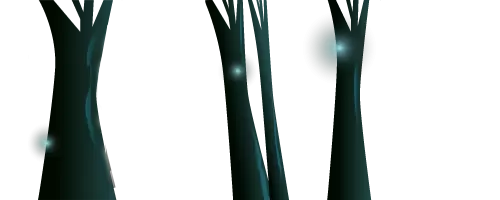WAS SANTA CLAUS A SHAMAN?

As a young child, I had all my doubts about that big, fat man with a white long beard, dressed in his red-white robe flying through the air in a sledge drawn by reindeer who didn't even have wings, bs! When I read this sentence back, it's only logical that my doubts were well-founded. There were no answers to questions such as, why does these reindeer fly, why does that fat man sink through the chimney to give us all those presents. After hours of research, I found out the true story, or rather, a story that is a lot more credible to me than the current, traditional story about the origin of Santa Claus and his reindeer. Read on and decide for yourself which of the two versions owns the honour of the true story behind the origin of this tradition and symbols.
The story of the Shamanic Santa Claus

The northern indigenous population of Siberia, called the Evenki, lived for some 1,000 years BC. The Evenki were masters in hunting and in the hating of reindeer. They were one with their surroundings and one with nature. Reindeer were essential for the Evenki to survive. The health and vitality of their reindeer was of utmost importance. The reindeer provided the Likes of transport, milk, meat, bones were made in tools and their coats were used as clothing. They were widely honored. In the past, humans learned much by observing animals. Many Yoga exercises are based and copied from animals in nature. The reindeer were therefore also observed by the Evenki. The Shaman of the Evenki noticed that the reindeer had a great passion for the mushroom Amanita muscaria that's the famous mushroom with red and white dots (the colors of Santa's clothing). The Shaman acknowledge that the reindeer had a gift to locate and dig up these mushrooms in the deep snow. They ate the mushrooms, and the other reindeer in turn ate the yellow snow (urine) of the reindeer that had consumed the mushrooms. The Shaman van de Evenki enjoyed this spectacle and wanted to know why these mushrooms were so precious among the reindeer. One day, the Shaman decided to eat this psychoactive mushrooms. The Shaman got sick but experienced an intense journey that brought a lot of miracles. Exhausting and still recovering from this almost magical experience, the Shaman began to tell his story:
Intense colours and patterns appeared, my consciousness was immediately magnified, and my ego disappeared like snow in front of the sun. There was simply no more “I”in this wonderful experience. My spiritual soul was sucked into the air by the chimney of the yurt (tippy of wood) and I ended up in a different dimension. Here I watched flying reindeer making dancing movements and stars falling out of the sky. The gateway to the Spiritual World was opened, and I could be in contact with the spirits and with nature.
Leaving the material world and delving into the world of the mind, this is what is all about. The Shaman needed to share this overwhelming and profound experience with his people. He knows that you will get sick and struck by abdominal pain when you eat the mushrooms fresh. But by observing the reindeer, he began to understand why the reindeer ate the yellow snow. The Shaman was so curious and ventured to eat his own yellow snow. Soon he noticed that the magical effects of the fly-agaric were still present in his urine, but that this time he did not get sick of it. He now fully understood why the other reindeer ate the urine in the snow from the reindeer who had eaten the Amanita muscaria. Now he had found a way to share his gained knowledge and experience with his people, without having to get sick. From this moment on, the fly fungus was declared sacred. The colours red and white were respected and included in their traditions and attire. The place where this psychoactive mushroom grows was of great importance, this place was according to the Shaman magical. Fly mushrooms often grow under a pine tree or a fir, trees that we use as a Christmas tree. The Evenki plucked and collected mushrooms to hung them in the branches of a pine tree or a fir. They danced around the tree and sang songs, while the mushrooms dried up. Once dried up, the Shaman came along and stopped this psychoactive mushrooms in a bag.
Santa Claus contemporary story

Santa Claus is dressed in red and white, has a large white beard, and lives on the North Pole in a large house where elves work for him. They produce presents and pack them for transport to fulfil the wishes of all children on Christmas Eve. These presents are then all brought by Santa on his sleigh, pulled by his reindeer, already flying through the air at the children's house and put under the Christmas tree. American Santa Claus is actually a corruption of The Dutch Sinterklaas or St. Nicholas. Dutch settlers who sailed to the United States in the 16th and 17th centuries brought the Dutch Sinterklaas tradition. Inspired by the stories and traditions of the Dutch settlers, the well-known writer Washington Irving wrote in 1823 a poem called 'The Visit of Saint Nicholas'. American Santa Claus, as we know him now, gradually began to take shape and all the way back in the 19th century the artist Thomas Nast, based on Irving's stories, changed Santa's appearance to the looks more or less that he has today.
Now that you've read both stories, are you still doubting where Santa's tradition and symbols come from? I don't anymore! The pine tree or fir and the decorations we hang in the Christmas tree, just like the Evenki did with the mushrooms, singing songs, the gifts from Santa Claus's pocket, like the mushrooms from the bag of the Shaman, the colour red in all our Christmas decorations, the gathering, the flying reindeer and the chimney of the yurt and that of our home... all similarities that we simply can't ignore. The use of psychedelics goes back thousands of years, and to date they are still taken to increase spiritual awareness.
On behalf of the whole 24High Team... Merry Christmas to you all!

















